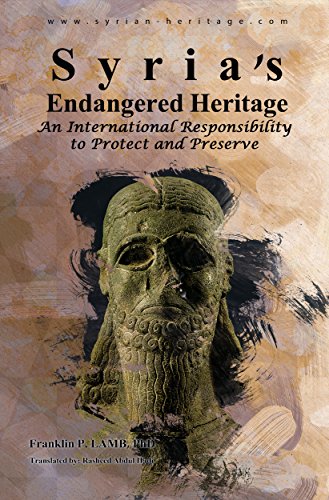Can Responsibility to Protect (R2P) preserve our cultural heritage in Syria?
Franklin Lamb
Beirut
This month's Trafalgar Square exhibition in London of a digitally modeled replica of Syria's 2000 year old Roman Triumphal Arch at Palmyra (Tadmor), which was destroyed by ISIS in October, 2015, is sparking yet further discussion about the rights and wrongs of restoration at ancient sites. Approximately two thirds the size of the original, the replica arch was created through the efforts of Oxford University's Institute of Digital Archeology (IDA). The continuing exhibition of the model has been urged and it is soon on route to Dubai as well as to New York and probably elsewhere, before ending up hopefully in Syria. It features a 3D digital model which employed computer-operated drills to carve Egyptian stone from an Italian quarry. The result is impressive for a number of reasons not least of which is an expression of solidarity with the people of Syria, the enduring custodians of our cultural heritage.

Trafalgar Square, London
(Image by Oxford University's Institute of Digital Archeology (IDA)) Details DMCA
In tandem with this important discussion, there is an important debate also taking place over how best to stop the destruction of our cultural heritage once iconoclastic groups like ISIS unleash their hatred of their and our past. A solution still eludes us despite various international and domestic agreements and legislative initiatives.
For the past 15 years, since the destruction of the Buddhas of Bamiyan by the Taliban, many in the global community have been contemplating what can be done to avoid future catastrophes to our shared cultural heritage like those we continue to witness in Syria and Iraq. Diplomacy has failed for the most part.
From an international legal and political point of view, the 2001 creation of the doctrine of Responsibility to Protect (R2P) is being looked at as a possible tool to salvage our shared global cultural heritage. This observer submits that employing R2P warrants serious discussion as an option that should not be facially rejected.
As is well documented, since its rapid expansion in 2013, ISIS has been responsible for pillaging and destruction of scores of cultural sites in Syria and elsewhere, notwithstanding the protests of the international community. None of the solutions proposed and the few implemented to date have stopped the devastation, raising the question of the legitimacy of organizing a humanitarian intervention-using armed force as necessary- to preserve our cultural heritage from destructive iconoclasm. Admittedly, R2P, particularly after its widely viewed illegal use by NATO in Libya, is controversial among international legal scholars and plenty of others.
This observer concedes that some
progress has been made at the international legislative level among UN Member States
as well as some positive influence of international law in mitigating-even if
to date only to a modest degree, the destructive capacity of iconoclastic
groups.
These extremist jihadists, such as
ISIS, attempt to attract media coverage, recruit new members and excavate and loot
antiquities to be sold on the international black market and they exhibit no
signs of abandoning their perversions of a few suras in the Koran. On the contrary,
ISIS continues to escalate what they pledge will be decades of ever metastasizing
wars of attrition against infidels everywhere. And it is probable that it will
continue largely unabated unless the international community, under the aegis
of the UN Security Council, takes immediate and resolute action.
(Note: You can view every article as one long page if you sign up as an Advocate Member, or higher).





